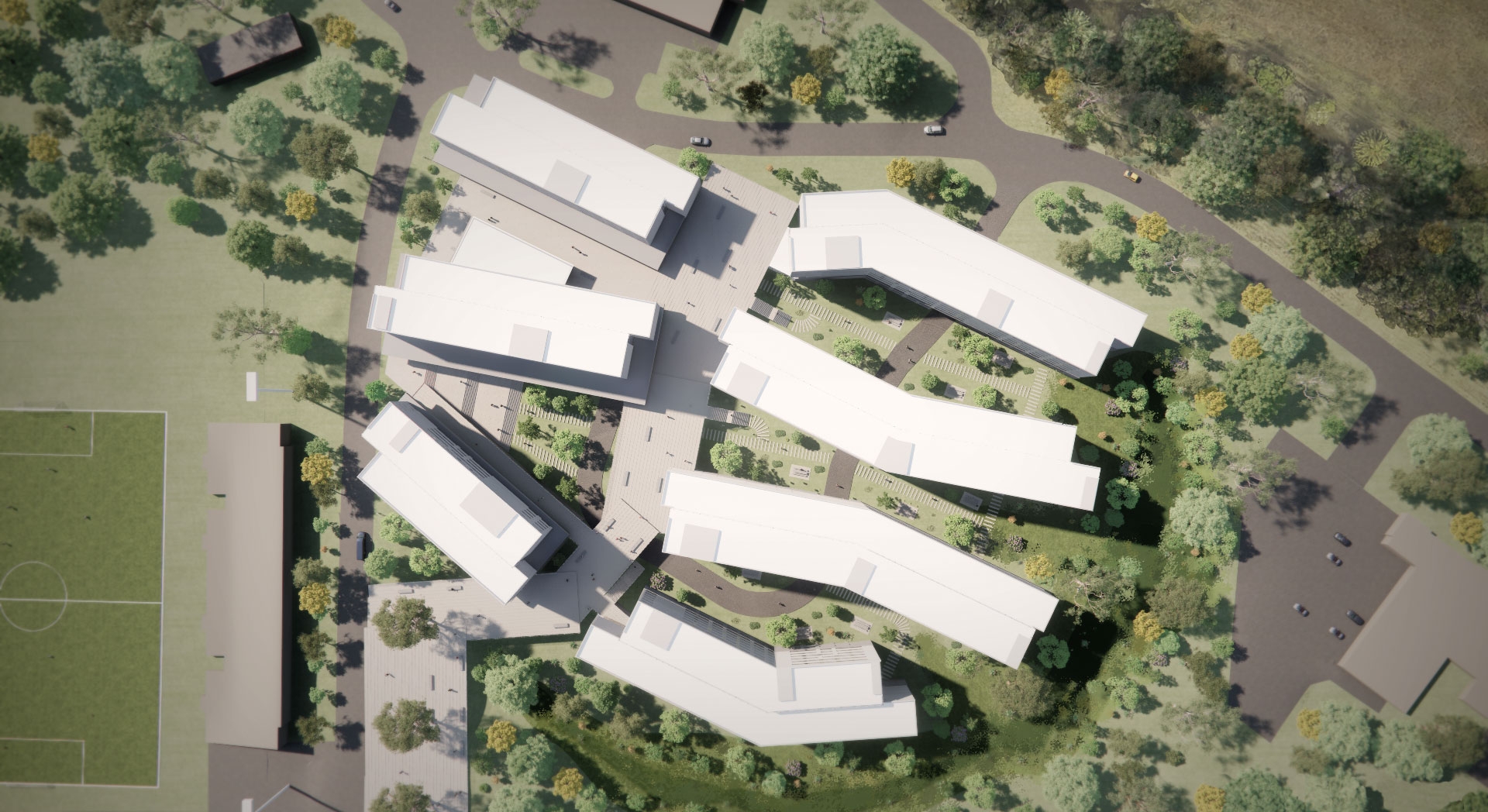Seeding Community
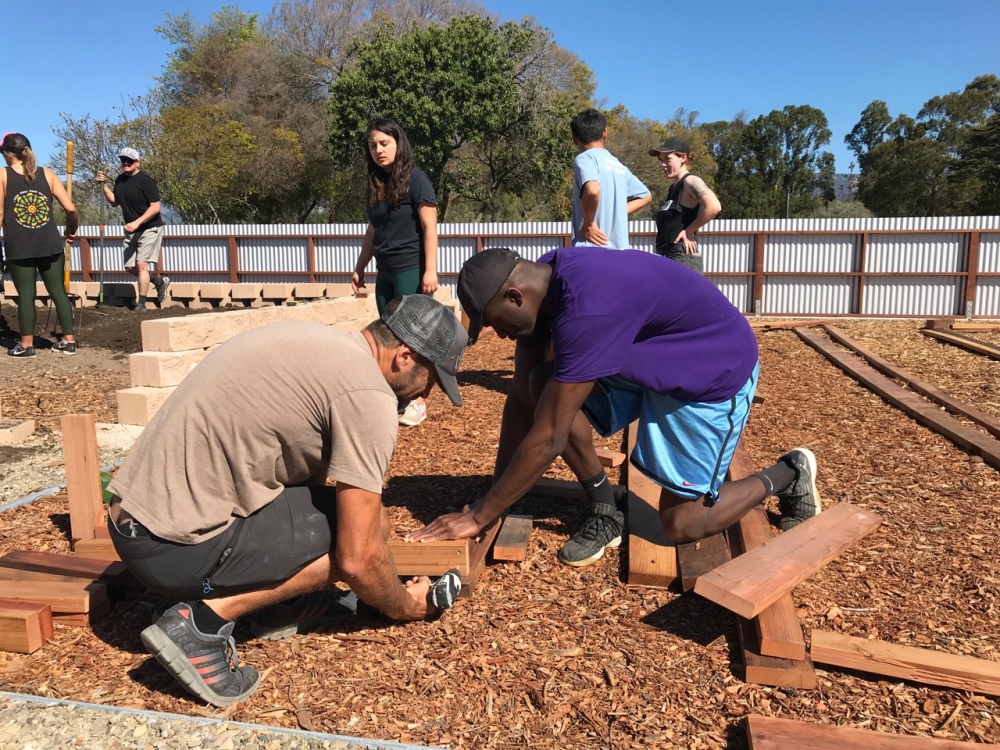
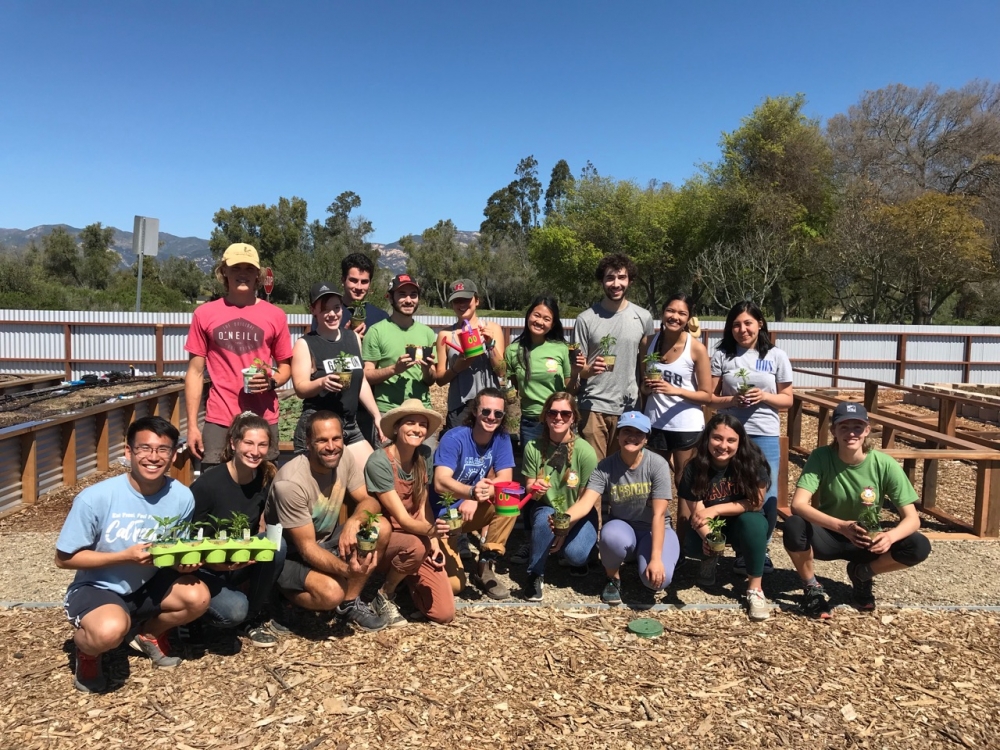
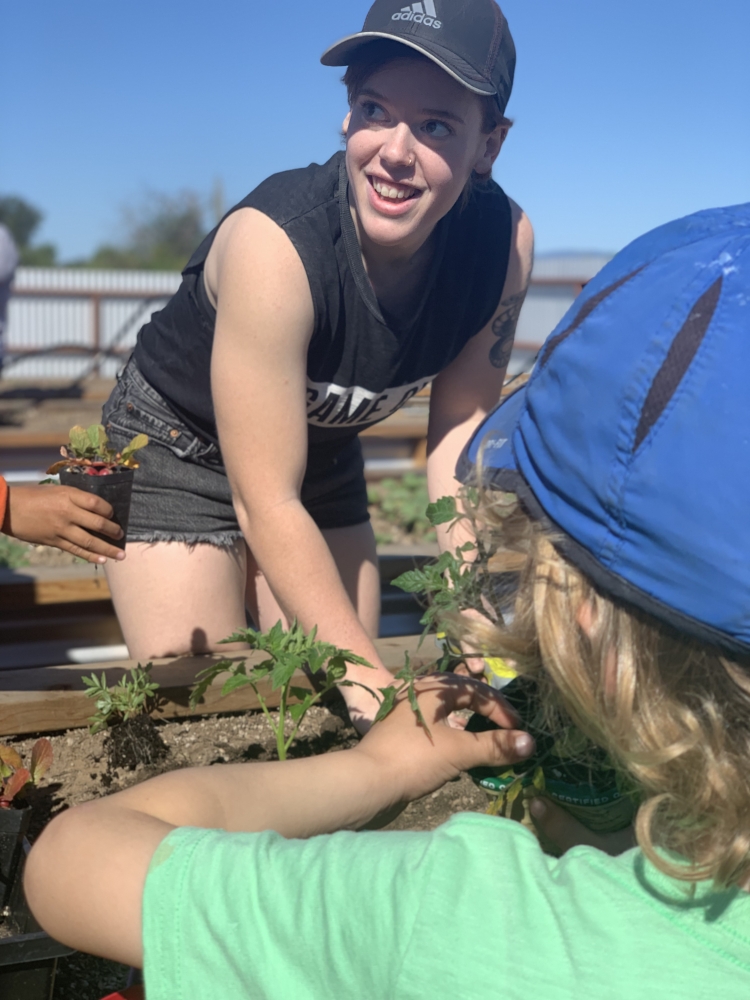
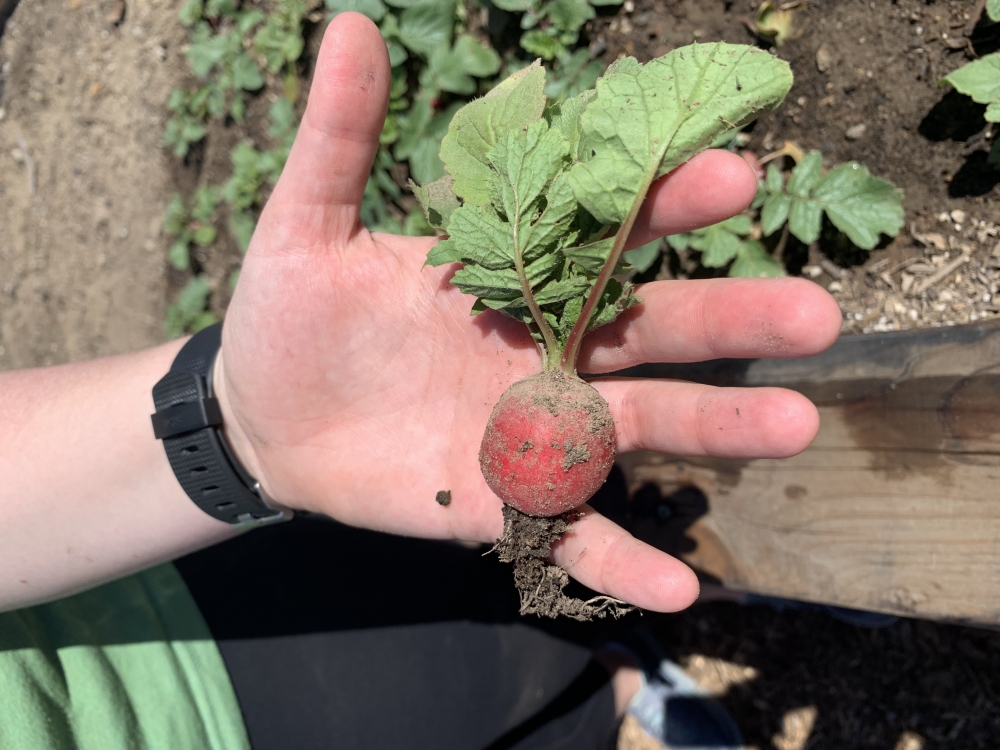
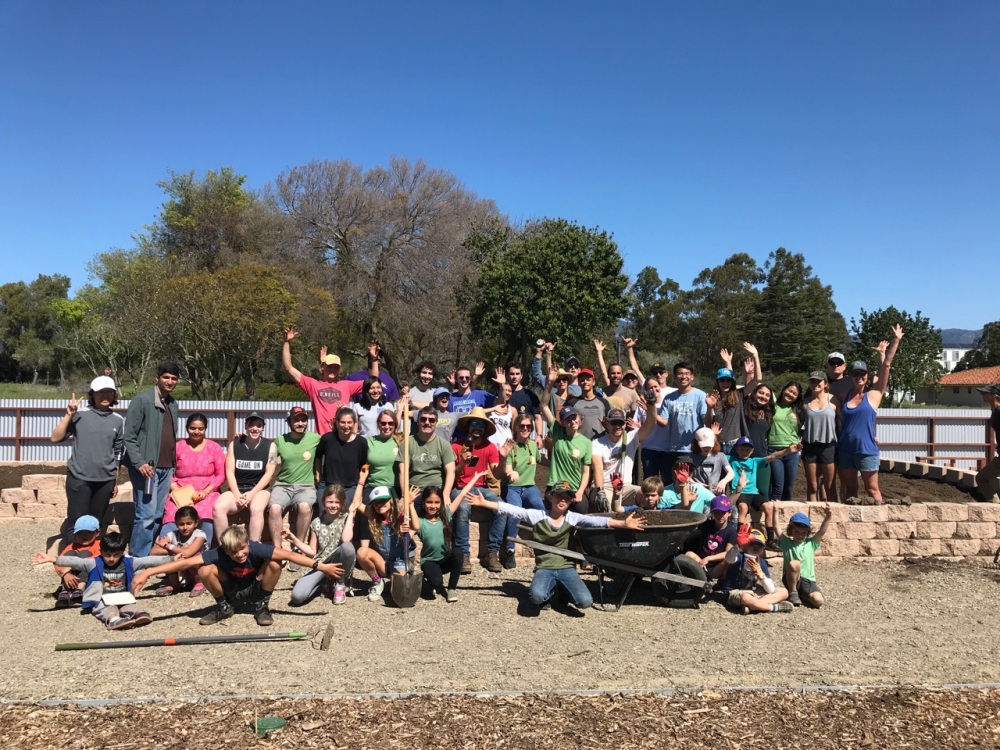
Two simple rows of radishes tell the story pretty well. But imagine how much richer the narrative when dozens of beds are flush with fresh produce. It won’t be long now.
After years of planning and effort, there are now actual seeds in the ground — and food sprouting above — at UC Santa Barbara’s Edible Campus Student Farm. And more are soon coming following a volunteer workday at the 12,000 square-foot parcel that saw vegetables planted, dirt moved, irrigation installed and raised beds built.
The all-ages, hands-on affair, which drew some 60 participants, was led by alumni Kim and Jack Johnson. The pair have been partners and mentors on Edible Campus, a multifaceted food sustainability initiative, since its inception and, through their Johnson Ohana Foundation, devoted donors to the project, too.
“It’s always exciting when an idea actually becomes a reality,” said Kim Johnson, who spent the warm morning moving mounds of compost into a large, low bed that ultimately will be a “food forest” of fruit trees. “Here we are building garden beds, and there are actually radishes coming up over there. This garden is coming to life. We’re excited to come back and see what happens this summer and see it continue to grow.”
The farm’s first harvest — those aforementioned radishes — is expected in weeks, with green onions, beans, bell peppers, eggplants and cherry tomatoes not far behind. They’ve all been planted using compost and soil amendments direct from the Department of Public Worms (DPW), a composting collective run by Associated Students, which oversees daily operations of the new farm.
“I’m hoping the farm becomes a place where both students and the community will come to engage and participate in sustainable agriculture,” said Caroline Conrad, a fourth-year student and operations coordinator for DPW, as she helped two kids plant tomatoes. “It’s exciting to teach the younger generation about plants and where our food comes from.”
Exciting, too, is the achievement that will officially be notched when that first load of fresh produce is delivered to the Associated Students Food Bank on campus, for distribution to UC Santa Barbara students in need.
“We’ve been really actively working on the vision for the farm and getting a space for the last four or five years, and for many years before that as an idea that was percolating around,” said Katie Maynard, a sustainability coordinator for the campus and longtime key organizer on Edible Campus. “I’m just so proud of our students who have made this happen, and carried it forward over multiple generations of students.
“A lot of other gardens in our area are growing and expanding at the same time,” added Maynard. “This farm will anchor a lot of that work by creating space really structured for community and class engagement. We have the structure to take gardening and farming in this area to another level.”
The hope is to have 10 beds completed by early spring and, with anticipated new funding, a few more by sometime in May, according to Maynard. A greenhouse will be erected over the summer and, as additional funds are raised, more beds will be built and planted; plans call for 37 beds in total, she said.
Once all three Edible Campus installations — the orange trees, the tower garden and now, the farm — are in full production mode, UC Santa Barbara hopes to double, from 25,000 pounds to 50,000 pounds, the amount of fresh produce distributed annually by the A.S. Food Bank.
And as with so many things at UC Santa Barbara, collaboration has been the key.
“It’s like this at every garden party I’ve ever been to — the bonds that have been created, the new friendships that come from people laughing together trying to build something,” Jack Johnson said during the volunteer event, while helping to construct a 16-foot-long planting bed. “Then the vegetables start to grow from that garden and friendship develops around that. It’s a fun thing.
“You want to keep it fun to maintain that excitement,” he added, noting the group of young kids at the event, most of whom helped Kim shovel dirt into wheelbarrows. “You want those kids, as they become teens, to keep showing up, and someday they’ll be the ones showing up and leading garden parties.”



